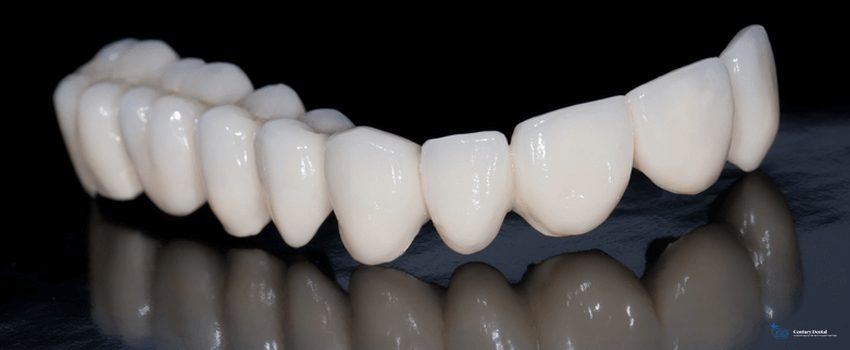According to the American Dental Association, an average adult between 20 to 64 years old has three missing or decayed teeth that need to be pulled out. Luckily, many options are available to replace missing teeth, including dental bridges.
What are Dental Bridges?
Dental bridges are appliances that replace a missing tooth or teeth. They are made of different components joined together to bridge the gap left by your missing tooth or teeth. You can choose from a variety of materials to use, including alloys, porcelain, and gold.
They serve both aesthetic and functional purposes. They restore your teeth’s appearance and allow you to eat and speak better.
Most dental bridges last between five and seven years. They can also last up to ten years if you maintain them properly.
Who Are Good Candidates for Dental Bridges?
Dentists consider the following factors before recommending dental bridges:
- Overall good health with no existing infections or other health problems
- Missing permanent teeth
- Good oral health
- Good oral hygiene
Make sure you talk to your dentist to ensure you meet the requirements before deciding to have the procedure.
Types of Dental Bridges
You have four different types of bridges to choose from:
Traditional Bridges
The most common type of bridge is the traditional bridge. They are made up of one or more fake teeth fixed in place with dental crowns, also known as abutments. These crowns are then cemented to the teeth next to your missing tooth. They are strong enough to replace molars.
Dentists can use traditional bridges when there are natural teeth on either side of the gap left by your missing tooth. However, one disadvantage of this dental bridge procedure is that dentists must prepare these natural teeth by shaving some of their enamel off to make way for the crown, which poses the risk of damaging your healthy teeth. This means your natural teeth will need some sort of extra protection because enamel doesn’t grow back.
Cantilever Bridges
Cantilever bridges can also replace missing teeth. They are similar to traditional bridges but are only supported by one abutment on one side. These bridges can be used even if only one natural tooth is left next to the gap.
Your dentist will also need to remove some of the enamel from the adjacent tooth to allow the crown to fit well. Using a cantilever bridge might lead to other problems like cracked teeth (to where the fake tooth is attached) as it is only attached to one side.
Maryland Bridges
Maryland bridges are an alternative to traditional bridges. The false teeth are held in place with a metal or porcelain frame attached to the backs of the adjacent teeth. Dentists don’t need to file down adjacent teeth and remove their enamel because they are not held in place by crowns.
Maryland bridges may be more conservative than traditional ones, but they still have drawbacks. The resin used to hold the bridge in place may limit its strength and might not stay in place in areas where they are exposed to high biting forces.
Implant-supported Bridges
Unlike other bridge types, implant supported bridges can replace multiple missing teeth. They are supported by dental implants instead of crowns or frameworks. Implants replace each missing tooth and keep the bridge in place. They may also be suspended between two implant supported crowns if a series of implants are not possible.
The implants supporting these bridges help make the bridge feel like natural teeth, and you only need to practice good oral hygiene to care for them. However, it may take two surgeries to place them. The first surgery is performed to place the implants, and the second is for placing the bridge. You will need to wait at least five months before your bridge is complete.
Advantages and Disadvantages of Dental Bridges
Like any treatment, dental bridges have advantages and disadvantages.
Advantages
- Restores the natural appearance of your smile
- Regains the ability to talk normally
- Prevents bone loss at the location of the missing tooth
- Maintains normal facial structure
- Prevents adjacent teeth from moving into the space of your missing tooth
Disadvantages
- Damages abutment teeth when compromised
- Causes tooth decay when infiltrated by bacteria and plaque
- Affects bite due to changes in teeth structure caused by crowns
- Collapse due to the failure of abutment teeth to hold the bridge
- Weakens abutment teeth
How to Care for Dental Bridges
Unlike dentures, you can’t remove dental bridges. They also won’t last forever, so you must care for them well to make them last. Some of the ways you can care for them and avoid dental bridge problems include:
Practice good oral hygiene.
Practicing good oral hygiene, like brushing and flossing every day, helps keep your remaining teeth healthy and strong and makes your dental bridges last longer. Your dentist or dental hygienist can show you how to floss and clean around the bridge. It’s also important to visit them at least twice a year for regular dental cleanings and exams.
Avoid certain foods.
Some foods can damage your dental bridges or your abutment teeth. Avoid the following foods to keep your bridges safe:
- Hard candies or snacks that can crack your bridges or natural teeth
- Sticky candy that can stick to crowns and pull them away from the abutment teeth
- Sugary foods that can cause cavities beneath the crowns
You will need to be careful with what you eat after your bridge has been placed. Follow your dentist’s instructions and make sure you know what you can and cannot eat in the next few days after your procedure.
How Much Is a Dental Bridge?
Dental bridges are one of your best options for tooth replacement. Your dental insurance may likely cover them; however, the costs may depend on your plan type.
The cost of dental bridges depends on what type of bridge you want and your location. They can cost anywhere from f$500 to $1200, while dental implants may cost $1000 to $3000 per tooth.
Key Takeaway
Dental bridges are one of many ways to replace missing teeth made up of one or more false teeth supported by abutments on one or both sides. Dentists can attach them to your teeth in different ways, using different restorations. Talk to your dentist if you’re eligible for dental bridges; they may also help you find the best solution that fits your needs.
Smile brightly with Century Dental.
Don’t let missing teeth ruin your confidence and health, and see how far you’ve come by looking at your dental bridge before and after pictures. Our dentist in St. Pete Beach, provides the best oral care services to help keep your smiles beautiful and strong. They also offer many missing teeth replacements that suit your needs. Contact us today for more information on dental bridges and our services.





